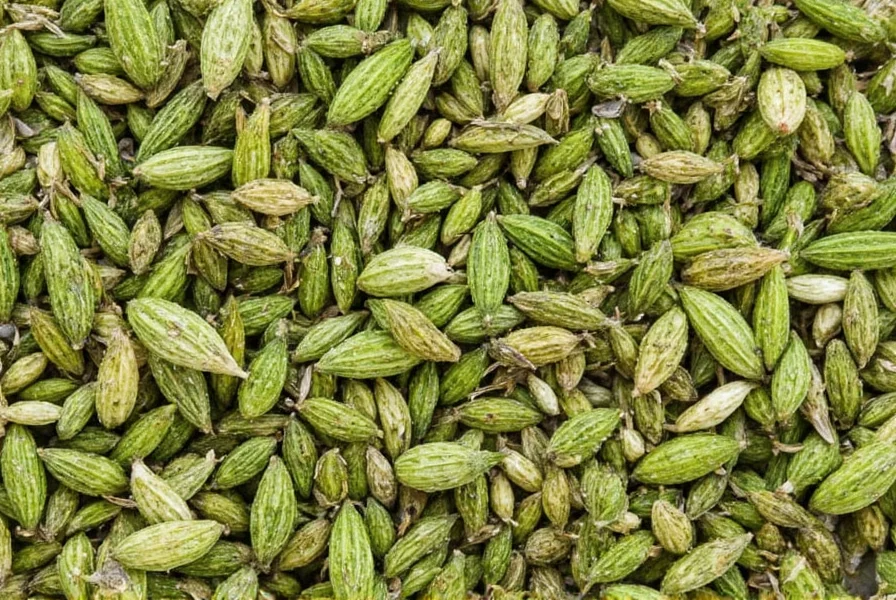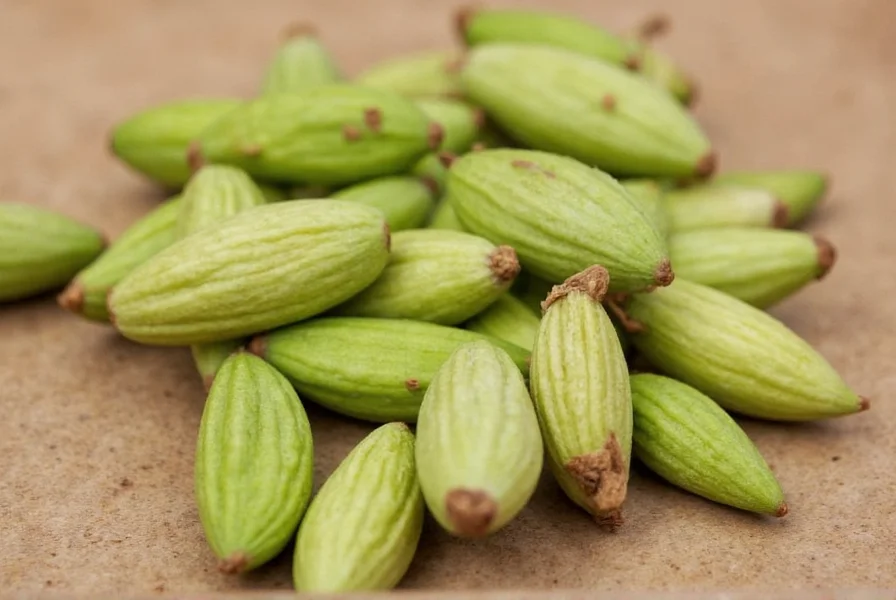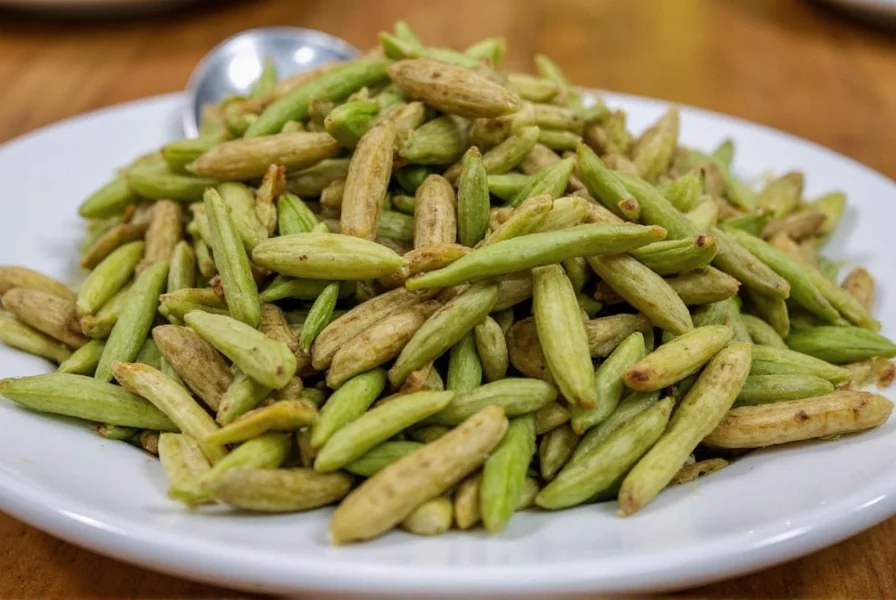Cardamom Pods Unwrapped: 7 Must-Know Secrets for Flavor-Loving Foodos
If you’ve ever bitten into a green pod and been hit with an aroma that smells like a cross between pine forest and sweet vanilla, congratulations—you’ve met cardamom. This spice is often called the 'Queen of Spices' and for good reason. Cardamom pods are not only packed with flavor, they’re incredibly versatile and have a long-standing history in both culinary and medicinal traditions.
Table of Contents
- What Exactly Is Cardamom?
- Green vs. Black: Types of Cardamom Explained
- Flavor Profile: What Does Cardamom Taste Like?
- 5 Clever Ways to Use Cardamom Pods in Your Kitchen
- Health Benefits: More Than Just a Pretty Pod
- Buying Guide: How to Choose the Best Cardamom Pods
- Storage Tips: Keep Those Pods Fresh
- Cultural Significance: Cardamom Around the World
- Fun Facts: Surprising Truths About Cardamom
- Conclusion
What Exactly Is Cardamom?
Cardamom is a spice made from the seed pods of several plants in the ginger family. It’s native to southern India but is now grown in many tropical regions around the world, including Sri Lanka, Guatemala, and Tanzania. There are two main types: green cardamom (true cardamom) and black cardamom, which differ in size, flavor, and usage.
The pods themselves contain small, aromatic seeds. While you can buy cardamom ground or whole, using the whole pods offers a more complex and fresher taste—especially when lightly crushed before use.
Green vs. Black: Types of Cardamom Explained
| Type | Appearance | Flavor | Best For |
|---|---|---|---|
| Green Cardamom | Small, light green pods | Sweet, floral, citrusy | Baking, desserts, chai, savory dishes |
| Black Cardamom | Larger, dark brown/black pods | Smoky, camphor-like, earthy | Curries, stews, masala blends |

When shopping, always read the label carefully. Some products labeled simply as “cardamom” might be mixed varieties or even adulterated. Always go for whole pods when possible—they last longer and retain their potency better than pre-ground versions.
Flavor Profile: What Does Cardamom Taste Like?
Cardamom has a bold, exotic flavor profile that's hard to pin down. Imagine a mix of lemon zest, mint, pepper, and pine resin, all wrapped up in a sweet, floral package. Green cardamom tends to be sweeter and more delicate, while black cardamom leans smoky and intense.
Its versatility allows it to bridge the gap between sweet and savory dishes, making it a favorite across cuisines—from Indian biryanis to Scandinavian pastries.
5 Clever Ways to Use Cardamom Pods in Your Kitchen
- Add them whole to rice: Toast a few pods in oil before adding rice and water for an aromatic base.
- Crush and sprinkle: Lightly crush pods and sprinkle seeds into coffee, smoothies, or oatmeal for a spicy kick.
- Infuse your tea: Add a pod or two to your morning chai for an extra layer of complexity.
- Mix into batters: Ground cardamom adds depth to cake and cookie doughs—especially great in spiced cookies and banana bread.
- Use in slow-cooked meats: Especially in Middle Eastern and Indian dishes where spices bloom over time.
Health Benefits: More Than Just a Pretty Pod
Beyond its culinary uses, cardamom has long been used in Ayurvedic and traditional medicine. Here’s what modern science says about its potential health perks:
- Antioxidant-rich: Contains compounds that help fight oxidative stress.
- May aid digestion: Stimulates saliva and enzyme production, easing bloating and gas.
- Anti-inflammatory properties: Could help reduce inflammation markers in the body.
- Breath freshener: Often chewed after meals to combat bad breath.
- Potential blood pressure benefits: Animal studies suggest it may help lower blood pressure—though human trials are needed.
Buying Guide: How to Choose the Best Cardamom Pods
Not all cardamom pods are created equal. Whether you're buying from a local market or online store, here’s how to pick the best ones:
Look for Whole Pods
Avoid pre-ground cardamom unless necessary. Whole pods maintain freshness and flavor far better than powdered versions.
Firmness Matters
Quality pods should feel firm and plump. Avoid soft, brittle, or cracked pods—they likely lost much of their aroma.
Color Check
Green cardamom should be bright green, not yellowish or faded. A dull color means age and reduced potency.
Brand Spotlight: Top Picks for Cardamom Pods
| Product | Description | Features | Use Cases | Who Should Buy |
|---|---|---|---|---|
| SpiceWorld Organic Green Cardamom Pods | Organically grown, hand-harvested from India | Certified organic, no additives, resealable pouch | Desserts, beverages, savory dishes | Home cooks and professional chefs alike |
| Epicurean Naturals Black Cardamom Pods | Large pods with rich, smoky flavor | Non-GMO, sustainably sourced, air-sealed packaging | Curries, marinades, spice blends | Those cooking hearty meat dishes or authentic Indian recipes |
| Nature’s Finest Crushed Cardamom Pods | Lightly crushed for easier use | Pre-crushed, convenient, easy storage | Smoothies, baked goods, quick infusions | Busy cooks who want flavor fast |
Storage Tips: Keep Those Pods Fresh
Cardamom pods will lose their fragrance if exposed to heat, light, or moisture. To extend shelf life:
- Store in an airtight container away from sunlight
- Keep in a cool, dry pantry for up to a year
- Freeze unused pods for extended freshness (up to 2 years)
- Grind only as needed—pre-ground loses flavor quickly

Cultural Significance: Cardamom Around the World
From ancient times to modern kitchens, cardamom has played a starring role across cultures:
- India: Used in chai, sweets, and garam masala
- Middle East: Added to coffee and rice dishes
- Scandinavia: Essential in baked treats like Finnish pulla and Swedish cardamom buns
- Mexico: Occasionally used in mole sauces
Fun Facts: Surprising Truths About Cardamom
- Cardamom was one of the most expensive spices in the world, second only to saffron and vanilla.
- It was once used by the ancient Egyptians to whiten teeth and freshen breath.
- Guatemala is now the world’s largest exporter of green cardamom.
- You can eat the entire pod—but the outer shell is usually discarded after releasing the seeds.
- In some parts of Asia, cardamom pods are placed inside wedding garlands for good luck.
Conclusion
Cardamom pods may look small, but they pack a mighty punch of flavor and versatility. Whether you're stirring them into your morning coffee, sprinkling them into a dessert, or simmering them into a curry, cardamom brings something truly unique to the table.
Now that you’ve unlocked the secrets behind these fragrant pods, it’s time to get creative in your kitchen. So grab a packet of quality cardamom pods, start experimenting, and discover why this spice has held court for centuries as the Queen of Spices.











 浙公网安备
33010002000092号
浙公网安备
33010002000092号 浙B2-20120091-4
浙B2-20120091-4